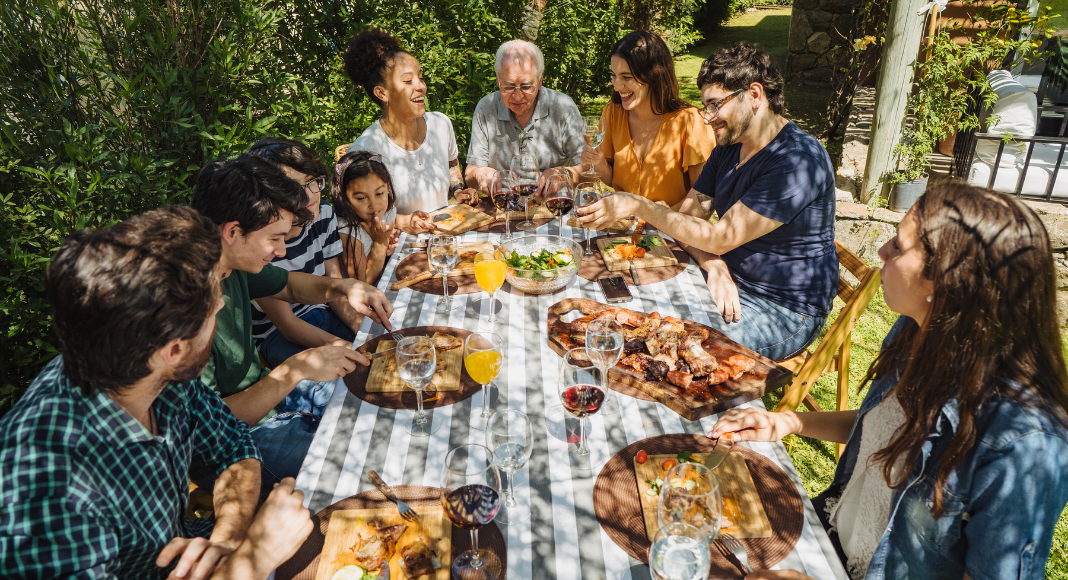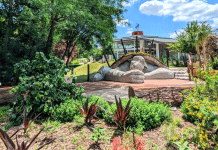 When you move from your home country to live abroad, you want to be immersed and have the full experience in the new place; you want to absorb the new culture and traditions, and also learn or improve your understanding of the language – if it’s a different one.
When you move from your home country to live abroad, you want to be immersed and have the full experience in the new place; you want to absorb the new culture and traditions, and also learn or improve your understanding of the language – if it’s a different one.
After we moved to the US three years ago, our children were so eager to learn everything that was new to them. It wasn’t long before they were speaking only in English to each other.
At that point, we realized we needed to start thinking of ways to keep our native language, culture, and traditions alive while integrating the new ones.
Adapting to a new country takes effort and finding the right balance is not always easy, but it’s an amazing journey. Here are some of the things we are doing at home in pursuit of that goal.
1. Use your native language at home
You and your children are immersed all the time in the language spoken in the new country. In the US, every in-person interaction of your daily lives, the music you listen to on the radio, and what you watch on TV, is in English. It’s incredible how fast the kids could forget words that were once natural if they are not using them: you may think it’s impossible but, believe me, it’s not. Speaking Spanish at home has helped our children to keep open their communication with family and friends in Argentina and Costa Rica.
2. Have cool books in your native language (or borrow them at your local library!)
Our kids, at the moment, prefer to read in English, and we love the chance they have not only to read those books but also to discuss them with their friends and with their teachers at school. We try to encourage them to read in Spanish too, no matter if it’s a comic, a mystery story, a super popular one. We try to look for books that we know are going to hook them and make them keep reading. This year, as we were doing Virtual School at home, as a part of our morning routine, we read a couple of pages from a book written in Spanish every day before the actual classes. We included a book of poems that my dad wrote, and I realized it was an amazing way to get them to know a lot of new words that we don’t normally use when we speak.
3. Encourage your kids to write in their native language
When you write you pay closer attention to the words and the ways that sentences are built than when you talk. When you write in both languages you get a deeper understanding of the differences and similarities, and that makes you understand better each one of them. You pronounce in your mind while writing and you get more conscious about the spelling. You found the words that are written the same and mean the same in both languages (“bananas”) and the ones that are written the same but have a different meaning (“sensible” in English, rational; in Spanish, sensitive). Writing letters or emails could be a great option to start with.
4. Cook together traditional dishes from your country
And while you do it, you can talk to your kids about the differences in what both countries eat or consider classics or comfort food. You cant tell them stories from your childhood or tell them when is it usual to cook those dishes in your country: is this a weekday dish? is this something you usually cook on the weekends? is this a special dish you cook only for patriotic dates? If you are interested in learning a traditional Argentinian dish, you can check how to prepare locro here.
5. Use the new traditions to talk about the native ones
When we celebrate the 4th of July here, we talked to the kids about how our Independence Day in Argentina is just five days apart, the 9th of July, and how the way to celebrate both dates is different.
Here in summer, you go to a family or community barbeque, there are outdoor activities organized, and you stay late to enjoy the fireworks. In Argentina it is winter, and you stay indoors most of the time. There are official parades in the morning, where the military, schools, and folkloric organizations are involved. It’s not rare that schools and community centers organize communal indoors lunches, where you eat traditional food as locro o empanadas. After lunch, some people dance and sing to our typical music played live on guitars.
Both ways are different and both are great. After all, we are both celebrating our freedom as countries!
6. Keep in touch with those who share your roots (and part of your personal history)
Family and friends are essential to our life. We keep in touch and care for our family and friends wherever they are. We are also open and willing to make new friends, to take the time to know new people: about their lives, their ideas, their feelings.
We are so blessed to have made such good friends in the places we have lived in and they are all equally close to our hearts, no matter if they are locals or ex-pats. Sometimes it’s hard to find time to meet in person and covid restrictions haven’t made it easier. Others, even scheduling a Facetime or a Zoom call could be a challenge. But again, it’s always worth the effort to be able to connect with someone, to share time with friends and family.
Do it YOUR way.
One of the things I appreciate the most about raising our kids in different countries is the opportunity they have to learn first hand that there is not a “right way” of doing things and that there is not an “only way” of seeing or understanding the world. I feel grateful for the possibility that we have as a family to experience those different ways, approaches, and ideas that come from different cultures, traditions, and languages.
Integrating those differences makes our lives richer and opens our horizons. Of course, you don’t need to cross physical frontiers to do that, but that’s the way we are living it, and I love it.
















